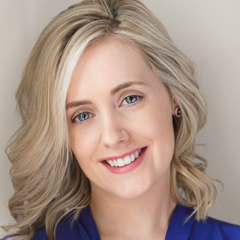In-Situ Verification of Disinfectant Rotation for Contamination Control

Pharmaceutical companies have rotated different cleanroom disinfectants for many years as part of the contamination control regime. However, the reasons for this rotation have not always been clear. If the question of why there are different cleanroom disinfectants rotated during a company’s contamination control process is posed to several different scientists, it is expected that varying rationales and explanations will be given.
It is understood that regulators will expect to see disinfectant rotation, but the written regulation giving guidance to do this is considered quite vague. The updated European Union (EU) GMP Annex 1 Manufacture of Sterile Medicinal Products, makes specific reference to rotating a sporicide as part of the regime. However, there is still no guidance available in the regulation on how many or which chemistries to rotate and the frequency of rotation to implement.
United States Pharmacopeia (2022), chapter <1072>, gives some guidance around frequencies for sporicidal rotation, but if a new facility tries to implement a regime without environmental monitoring data to refer to, implementing an appropriate rotational regime can appear daunting.
Some sites may air on the side of caution and rotate the sporicide at a higher frequency (e.g., weekly). This has the added benefit of more assurance in controlling the challenging spore-forming organisms and species of mold. However, depending on the chemistry used, it may have the downside of potential corrosion over prolonged periods. A strong rationale is also likely to be required if the site decides to reduce the use of the sporicide in the future (e.g., moving from weekly to monthly).
It is not uncommon for some facilities to use the sporicide at lower frequencies (e.g., quarterly) due to the nature of the chemistry the site is using and potential health and safety controls that need to be considered when the chemistry is used, such as respirators. This approach can sometimes appear reactive as opposed to proactive. So, what is the happy medium?
The wording used in the updated Annex 1 has also sparked some debate as to whether regulators now expect the rotation of two broad-spectrum disinfectants alongside a sporicide, effectively using three products in rotation as the disinfection regime. The in-situ environmental monitoring data from four established manufacturing facilities was reviewed to address this question (see Table 1). Is the rotation of two broad-spectrum disinfectants with a sporicide more effective than using only one broad-spectrum and a sporicide?
| Name | Manufacturing Environment | Grades | Rotation |
|---|---|---|---|
| Site 1 | BioPharma | Sterile areas | Two broad spectrum disinfectants and a sporicide |
| Site 2 | Vaccine Manufacture | Sterile areas | One broad spectrum disinfectant and a sporicide |
| Site 3 | Sterile Injectables | Sterile areas | Switched from two broad spectrum disinfectants and a sporicide (year 1) to one broad spectrum disinfectant and a sporicide (year 2) |
| Site 4 | Medical Device | Sterile areas | One broad spectrum disinfectant used with no sporicide |
The evaluation performed across the four different manufacturing sites provides data demonstrating that rotating two broad-spectrum disinfectants with a sporicide instead of one broad-spectrum with a sporicide does not necessarily benefit environmental control. This has wider implications regarding challenging the paradigm that rotating more than one broad-spectrum disinfectant in a cleanroom environment is preferable or beneficial.
This topic and data will be presented in more detail on day two of the upcoming 2023 PDA Pharmaceutical Microbiology Conference in Washington, D.C., October 2-4, and will be available in peer-reviewed journal format soon.
Remember, come for the science, and stay for the community. See you there!
Note: Globally, there are different terminologies in use for chemical agents that kill microorganisms; Annex 1 utilizes the terms cleaning/disinfection. However, these are commonly used interchangeably with sanitization/sanitizer.



 Laura Brennan leads the European Technical Consulting Team for Ecolab Life Sciences. Her team is responsible for delivering technical consulting in cleanroom cleaning and disinfection, cleaning in place, and hydrogen peroxide vapor bio-decontamination. Her team supports clients in several areas, such as review of existing regimes in line with regulatory expectations, troubleshooting specific issues, corrective and preventative actions, validation, and general technical inquiries.
Laura Brennan leads the European Technical Consulting Team for Ecolab Life Sciences. Her team is responsible for delivering technical consulting in cleanroom cleaning and disinfection, cleaning in place, and hydrogen peroxide vapor bio-decontamination. Her team supports clients in several areas, such as review of existing regimes in line with regulatory expectations, troubleshooting specific issues, corrective and preventative actions, validation, and general technical inquiries.